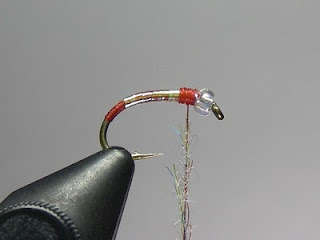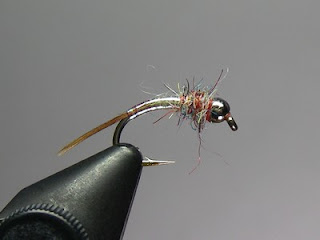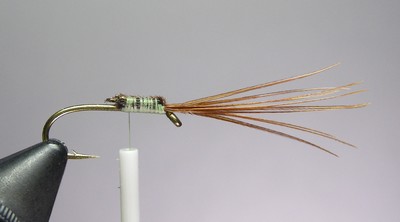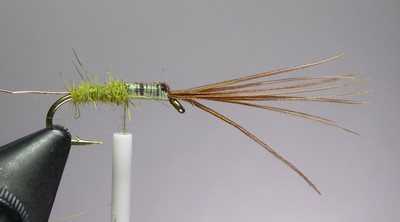Flies from the internet.
Hook: Scud style
Bead: Rainbow color
Thread: Olive
Rib: Black wire
Thorax: Olive Ice Dubbing
Attach the bead and tying thread
Tie in the wire behind the bead and wrap thread toward the bend of the hook
Build a thread body and rib with the wire
Trim off the wire and dub the thread
Wrap the thorax with the dubbed thread and whip finish
Hook: Scud style
Bead: Pearl color
Thread: Red
Tag & Body: Red thread and pearl tinsel
Thorax: Sow/Scud Dubbing - Rainbow Color
Add bead to the hook and wrap red thread for the under body and tag
Attach pearl tinsel and wrap the body as shown above
Dub the thread with the rainbow colored sow/scud dubbing
Wrap a thorax behind the bead, tie off the thread and whip finish
Hook: Scud style
Bead: Silver Tungsten
Thread: Red
Tail: Pheasant Tail Fibers
Body: Pearl Tinsel
Thorax: Sow/Scud Dubbing - Rainbow Color
Attach a silver tungsten bead and trying thread
Tie in the pheasant tail fibers and create the tail and body as shown above
Tie in pearl tinsel behind the bead
Wrap a tinsel body
Dub the tying thread with the rainbow sow/scud dubbing
Wrap a thorax behind the bead, tie off the thread and whip finish











































